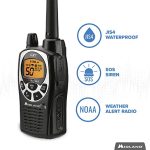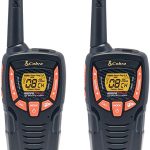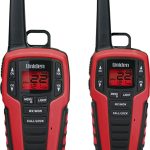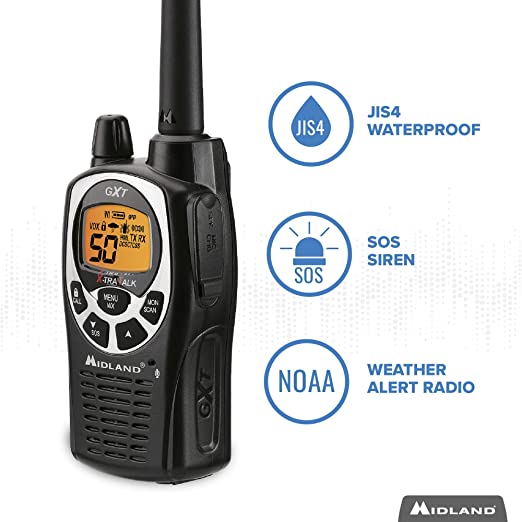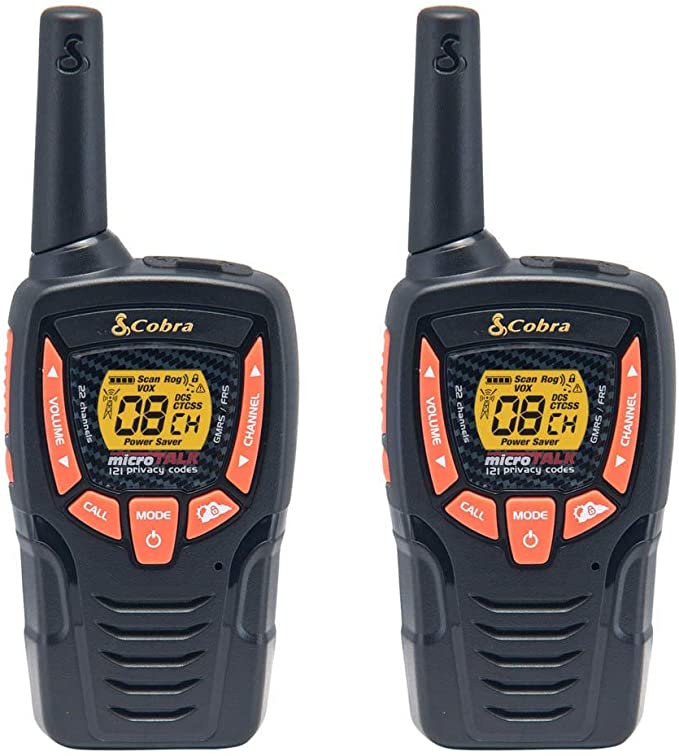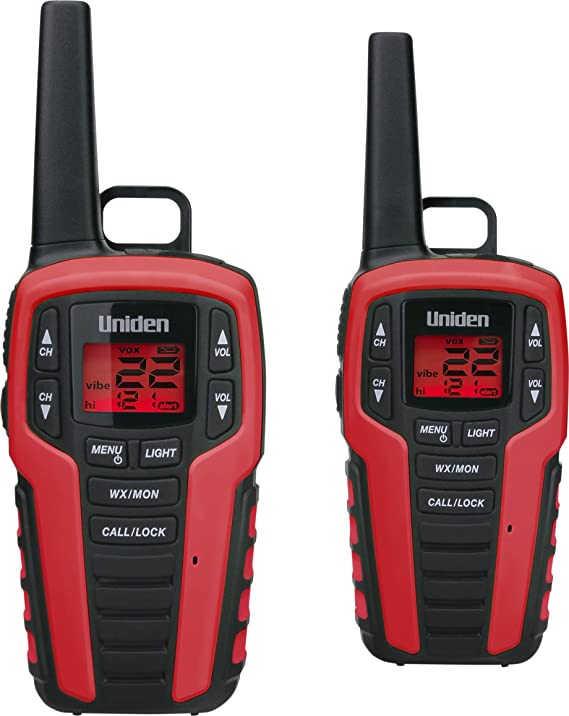Best 100 mile Two Way Radios for Long Range
A two-way radio is a transceiver, which allows people to communicate with each other over short or long distances. They come in a variety of shapes and sizes, but all work on the same basic principle: one person speaks into a microphone, and the sound is converted into an electrical signal that is then sent out by the antenna. The signal is received by another radio, also fitted with an antenna, and the speaker will play back the message. Two-way radios are commonly used by hikers, campers, and other outdoor enthusiasts who need to stay in touch with each other over long distances.
There are a number of different factors to consider when purchasing a two-way radio for long range communication. The most important is the type of antenna it uses. There are two main types of antennas: omnidirectional and directional. Omnidirectional antennas send out signals in all directions, which makes them perfect for communicating with people who are nearby. However, they are not as effective for communicating with people who are far away, because the signal gets weaker the further it travels. Directional antennas emit a focused signal in a specific direction, making them better for communicating with people who are far away. However, they can’t be used to communicate with people who are close by.
Our Top 3
Another important factor to consider is the power output of the radio. The higher the power output, the further the signal will travel. Most two-way radios have a power output of between 0.5 and 5 watts. Finally, you need to consider the frequency band that the radio operates on. There are three main frequency bands: VHF (Very High Frequency), UHF (Ultra High Frequency), and LMR (Land Mobile Radio). VHF radios operate in the range of 30 MHz to 300 MHz, UHF radios operate in the range of 300 MHz to 3 GHz, and LMR radios operate in the range of 400 MHz to 4 GHz.
When choosing a two-way radio for long range communication, it’s important to consider all of these factors. The best option will vary depending on your specific needs and requirements.
Buying Tips:
- The first factor to consider when choosing a two-way radio for long range is the radio frequency. Radio frequencies are measured in MHz (megahertz) and the higher the MHz, the better the range.
- The second factor to consider is the power output. Two-way radios come in different power output levels, measured in watts. The higher the wattage, the further the radio waves will travel.
- The third factor to consider is the antenna type. There are two main types of antennas: base station antennas and mobile antennas. Base station antennas are larger and more powerful, but they must be stationary. Mobile antennas are smaller and less powerful, but they can be moved around as needed.
- The fourth factor to consider is the battery type. Two-way radios can use either disposable or rechargeable batteries. Disposable batteries are cheaper and easier to replace, but they will need to be replaced more often than rechargeable batteries. Rechargeable batteries are more expensive upfront, but they will save money in the long run.
- The fifth factor to consider is the price. Two-way radios can range in price from a few dollars to several hundred dollars. It is important to find a radio that fits within your budget while still meeting your needs.
Our Recommendations
Rank
Image
Features
Price
Midland 1001LWX
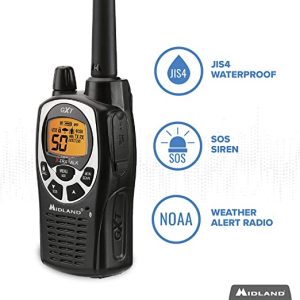
The Midland 1001LWX is a two-way radio that has a range of up to 100 miles. It features 36 channels, as well as a weather alert function that can keep you informed of severe weather conditions in your area. The radio also has a hands-free function that allows you to use it without having to hold it, and a backlit LCD display that makes it easy to see in low-light conditions.
Pros
Cons
Cobra MR HH450DELUXE
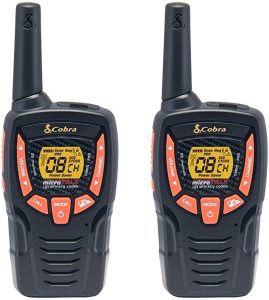
The Cobra MR HH450DELUXE is a two-way radio that has a range of up to 100 miles. It features 22 channels, as well as an emergency alert button that can be used to notify others of your location in the event of an emergency. The radio also has a NOAA weather alert function that will keep you informed of severe weather conditions in your area, and a backlit LCD display that makes it easy to see in low-light conditions.
Pros
Cons
Uniden MHS75
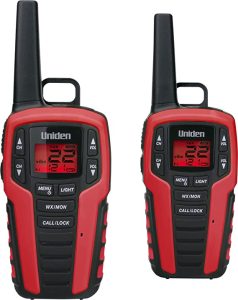
The Uniden MHS75 is a two-way radio that has a range of up to 100 miles. It features 16 channels, as well as an emergency alert button that can be used to notify others of your location in the event of an emergency. The radio also has a NOAA weather alert function that will keep you informed of severe weather conditions in your area, and a backlit LCD display that makes it easy to see in low-light conditions.
Pros
Cons
Icom IC-M73Plus

The Icom IC-M73Plus is a two-way radio that has a range of up to 100 miles. It features 30 channels, as well as an emergency alert button that can be used to notify others of your location in the event of an emergency. The radio also has a NOAA weather alert function that will keep you informed of severe weather conditions in your area, and a backlit LCD display that makes it easy to see in low-light conditions.
Pros
Cons
FAQ’s
What two-way radios have the longest range?
Two-way radios with the longest range are typically those that operate on higher frequencies, such as VHF or UHF.
How far can a 2 way radio transmit?
A 2 way radio can transmit up to 10 miles depending on the terrain and obstructions.A 2 way radio can transmit up to three miles.
What is the difference between a walkie-talkie and a 2 way radio?
A walkie-talkie is a handheld two-way radio that typically has a shorter range than a 2 way radio. Walkie-talkies are often used by law enforcement or security personnel, while 2 way radios are more commonly used by businesses and individuals.
Is VHF or UHF better for long distance?
It depends on a variety of factors, such as the terrain and the distance between the two points. However, in general, UHF signals travel further than VHF signals.
What radios do forest rangers use?
Forest rangers use radios to communicate with one another and with other emergency responders. They may use different types of radios, depending on the agency they work for. Some agencies use VHF radios, while others use UHF radios.
What radios do park rangers use?
It likely varies depending on the park. However, many park rangers may use radios that are specifically designed for emergency services or public safety. These radios may offer features like enhanced durability, weatherproofing, and long-term battery life, which can be important in emergency situations.
How far do military radios reach?
Military radios can reach up to 100 miles, depending on the terrain and the type of radio.
Which frequency is best for long range?
It depends on a number of factors, such as the terrain you are trying to cover and the size and type of antenna you are using. However, some frequencies are better than others for long-range communication. For example, lower frequencies like AM radio (530-1710 kHz) can travel farther than higher frequencies like FM radio (88-108 MHz), and microwaves (2.4-5.8 GHz) can travel even farther.
